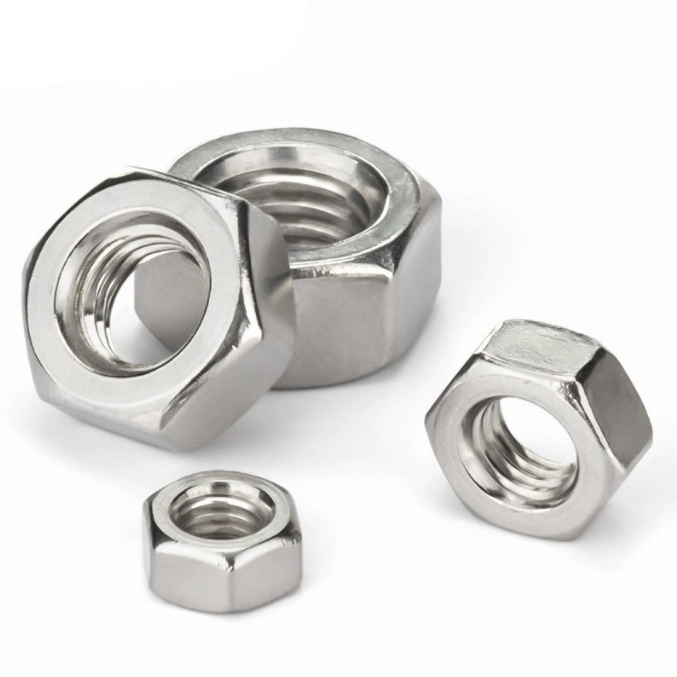

Similar Specifications for Plain Washers According to DIN 125 Standards
Th10 . 13, 2024 03:51 Back to list
Similar Specifications for Plain Washers According to DIN 125 Standards
Understanding Plain Washers in accordance with DIN 125 Standards
In the realm of mechanical engineering and manufacturing, the importance of fastening components cannot be overstated. One of the essential elements in this domain is the plain washer, specifically the ones designed according to the German Institute for Standardization, known as DIN 125. Understanding the characteristics, applications, and variations of these washers can be crucial for engineers and procurement specialists alike.
What is a Plain Washer?
A plain washer is a flat disc-shaped piece, typically made from materials such as metal, plastic, or rubber, that is placed between a nut and the surface of an object, or between two objects themselves. The primary functions of a plain washer include distributing the load of a threaded fastener (like a bolt or screw), providing surface protection, and offering some level of isolation to prevent wear or corrosion.
DIN 125 Standards
DIN 125 specifies the dimensional and material standards for plain washers, ensuring consistency and reliability across various applications. The standard categorizes washers based on their outer diameter, inner diameter, and thickness, typically representing the dimensional tolerances suitable for use with metric fasteners.
Types of Washers Under DIN 125 - Type A These washers have a larger outer diameter, which spreads the load more effectively, making them ideal for softer substrates that might compress under pressure. - Type B With a smaller outer diameter, these washers are suitable for applications involving tighter tolerances and where space is a concern.
Material Selection
The choice of material for plain washers is critical to their performance
. Common materials includeplain washer din 125

1. Steel Often carbon steel, which provides strength and durability. Steel washers can be coated with zinc or other materials to resist corrosion. 2. Stainless Steel Provides excellent resistance to corrosion and is suitable for use in harsh environments. 3. Plastic Non-metal washers, made from nylon or polypropylene, are often used when electrical insulation is necessary or where chemical resistance is required. 4. Rubber These washers offer excellent sealing capabilities and are commonly used in applications where vibration dampening or fluid sealing is important.
Applications of Plain Washers
Plain washers have an extensive range of applications across various industries
- Construction In structural assemblies, washers help to distribute loads more uniformly to prevent damage to the material being used. - Automotive Used in various components to provide stability and reduce wear due to movement and vibrations. - Electronics In electronic assemblies, washers ensure that connections are secure, and they help prevent damage to the surfaces of sensitive components. - Aerospace High precision and reliability requirements make DIN 125 plain washers critical in ensuring the integrity of fastening in aircraft and spacecraft components.
Benefits of DIN 125 Plain Washers
Using DIN 125 plain washers comes with several advantages
- Load Distribution By distributing the load evenly, these washers help prevent deformation of strips or surfaces. - Protection Against Damage They act as a barrier between the fastener and the surface material, minimizing wear and tear during assembly and over time. - Versatility Their standardization allows for widespread use across different industries, making them a highly versatile option for engineers and manufacturers. - Simplicity and Cost-Effectiveness Their design is straightforward, making them an economical choice in fastener applications without sacrificing performance.
Conclusion
In summary, DIN 125 plain washers are vital components in multiple engineering sectors. Their standardized dimensions, variety of materials, and broad applicability make them indispensable in ensuring effective fastening solutions. Whether you are in construction, automotive, electronics, or aerospace, understanding and utilizing DIN 125 plain washers can significantly enhance the performance and durability of your projects. As industries continue to evolve, the reliance on such simple yet effective components will remain crucial in the pursuit of efficiency and reliability in engineering.
Latest news
-
Premium Fasteners Manufacturer | AI-Driven Solutions
NewsAug.01,2025
-
Hot Dip Galvanized Bolts - Hebei Longze | High Strength, Corrosion Resistance
NewsAug.01,2025
-
High-Strength Hot Dip Galvanized Bolts - LongZe | Corrosion Resistance, Custom Sizes
NewsAug.01,2025
-
Best Self Tapping Screws for Drywall - Fast & Secure Installation
NewsJul.31,2025
-
High-Strength Hot Dip Galvanized Bolts-Hebei Longze|Corrosion Resistance&Customization
NewsJul.31,2025
-
Hot Dip Galvanized Bolts-Hebei Longze Metal Products|Corrosion Resistance&High Strength
NewsJul.31,2025

